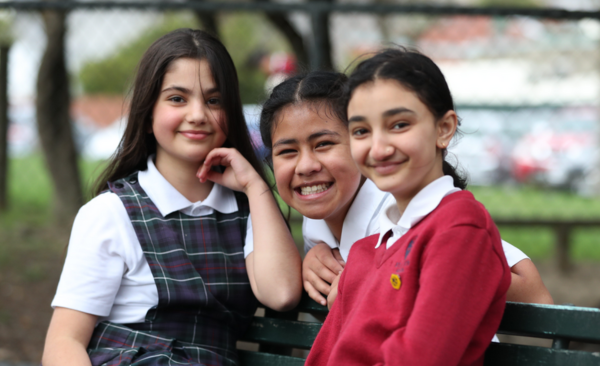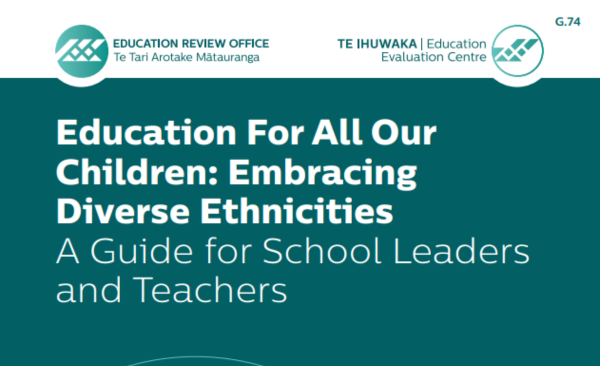Aotearoa New Zealand is ethnically diverse, and this is changing quickly.
Diversity is increasing across the country, but most rapidly in urban areas. Learners will be from a wider range of ethnic communities. By 2043, it is expected just over one in four (26 percent) learners will identify as Asian and around one in 20 (3.6 percent) will identify as Middle Eastern, Latin American, or African (MELAA). In Auckland, more than two in five (43 percent) learners will identify as Asian.
Figure 1: Proportion of learners (aged 5 – 19) in Aotearoa New Zealand who identify as MELAA or Asian
Stats NZ, 2013 and 2018 Censuses, Ethnic Group (for 2013 and 2018); and National ethnic population projections: 2018(base)–2043, Median projections (for 2043).
Figure 2: Proportion of learners (aged 5 – 19) regionally who identify as Asian
Source: Stats NZ, 2018 Census, Ethnic group (for 2018) and Subnational Population Projections 2018‑base (for 2043) Median projections (for 2043).
1. Many learners from ethnic communities achieve well in education.
Looking at National Certificates of Educational Achievement (NCEA), achievement and endorsements are higher for Asian learners than the New Zealand average, and both MELAA and Asian learners are more likely to achieve University Entrance and go onto university. However, there are significant differences across ethnic communities, and within all ethnic communities there are learners who are not achieving well.
Figure 3: NCEA Level 2 Merit and Excellence endorsements, by ethnicity: 2021
Source: NZQA, NCEA Attainment by Level 1, 2 and 3 ethnicities, 2021
2. Learners from ethnic communities experience widespread racist bullying, which too often is not taken seriously by their school.
One in five learners from ethnic communities have experienced racist bullying in the last month, and over half have seen others being bullied because of their ethnicity. Both whānau and learners report that racist bullying needs to be better identified and addressed at school. Nearly a third of learners from ethnic communities do not think their school takes racist bullying seriously.
Figure 4: Learners’ experiences of racist bullying and racism in the past 30 days
Source: ERO student survey, 2022
Note: The overall percentage of responses is larger than 100 percent because respondents could select multiple options.
“I still feel kind of weird taking Indian food to school as you have to eat it with your hands. One of my friends—she is Indian too, got bullied so badly for her food that she became a loner. And she tried to bring sandwiches to school even though she didn’t like them, but it was too late”. (Learner)
3. Learners from ethnic communities often do not feel they belong.
Nearly one in five learners from ethnic communities reported they frequently feel they do not belong and a third feel lonely at school every week or every day. Nearly one in five also feel they have to hide their ethnic identity at school, or feel excluded from activities because of their ethnic identity. MELAA learners in particular have very low wellbeing.
“I feel like the only time you can interact with your own culture is culture week.” (Learner)
4. Education provision does not always reflect what whānau and learners from ethnic communities want.
As Aotearoa New Zealand changes, what communities want from education changes too. Education is not currently always reflecting what whānau from ethnic communities want. Four in 10 whānau from ethnic communities, and nearly a third of learners, do not feel schoolwork is challenging enough. Almost two-thirds of whānau think schools should support their mother tongue, but there are 11 ethnic languages - including Hindi, which is the fourth most commonly spoken language in Aotearoa - which are not available as NCEA qualifications. Some whānau also want schools to teach more about religions.
5. Whānau from ethnic communities face barriers to engaging with schools.
Whānau from ethnic communities want to be part of their children’s education. They attend parent information sessions more than any other activity but find information about their children’s learning insufficient or confusing. They are significantly under-represented on School Boards – for example, only 2 percent of parents on School Boards are Asian.
6. Many learners from ethnic communities go on to tertiary study, but pathways are confusing, and, for some, choices are unfairly constrained by teachers’ biases.
Learners from ethnic communities are more likely to go on to tertiary study than the New Zealand average. But for some, their choices are being constrained. More than one in four secondary learners from ethnic communities report that teachers’ recommendations for their course selection are influenced by ethnicity. Both learners and whānau from ethnic communities find NCEA confusing. And a fifth of learners do not feel supported in choosing subjects or career pathways.
“Stereotyping of what particular ethnic groups should aspire to is very limiting and doesn’t enable students to reach their aspirations”. (Community youth leader)






